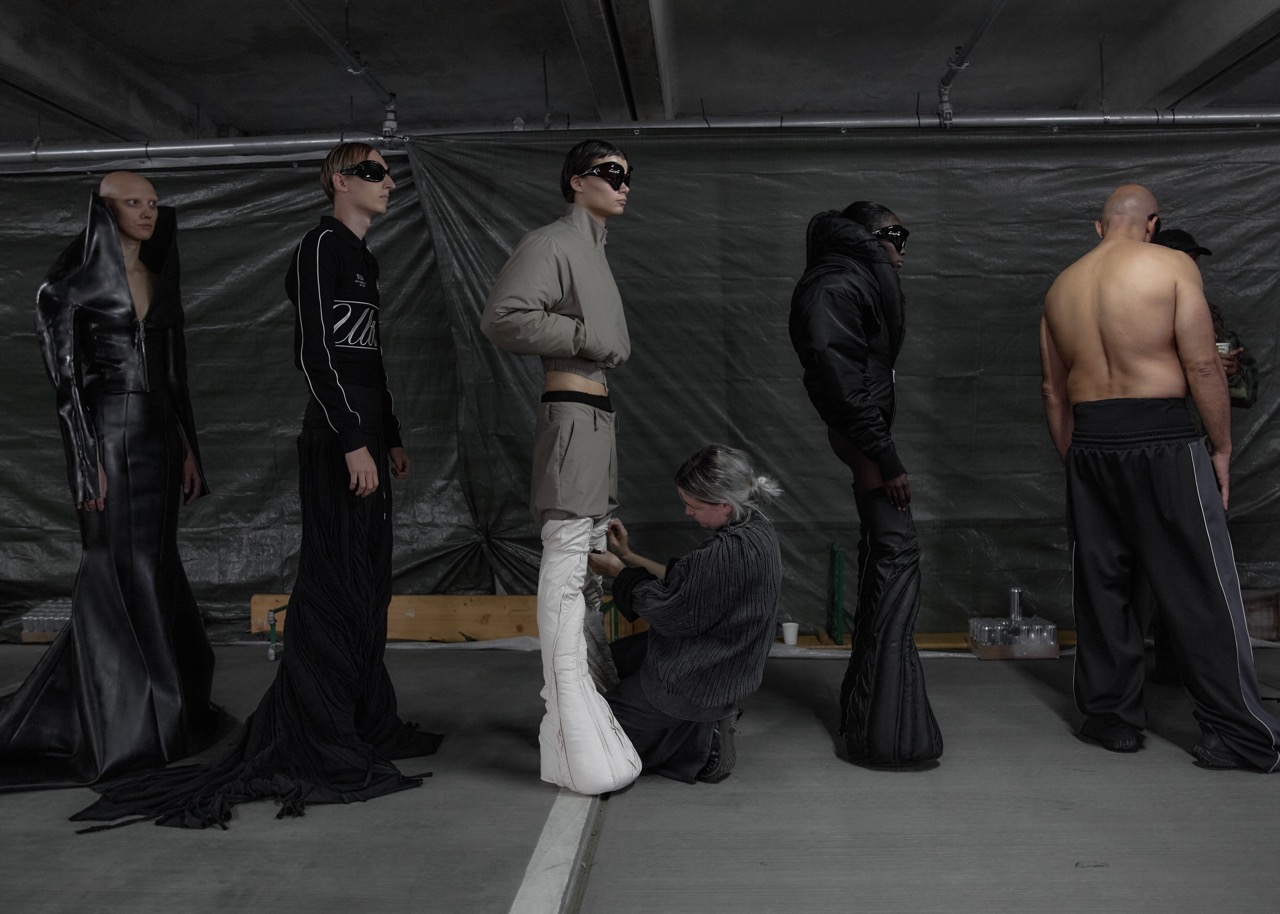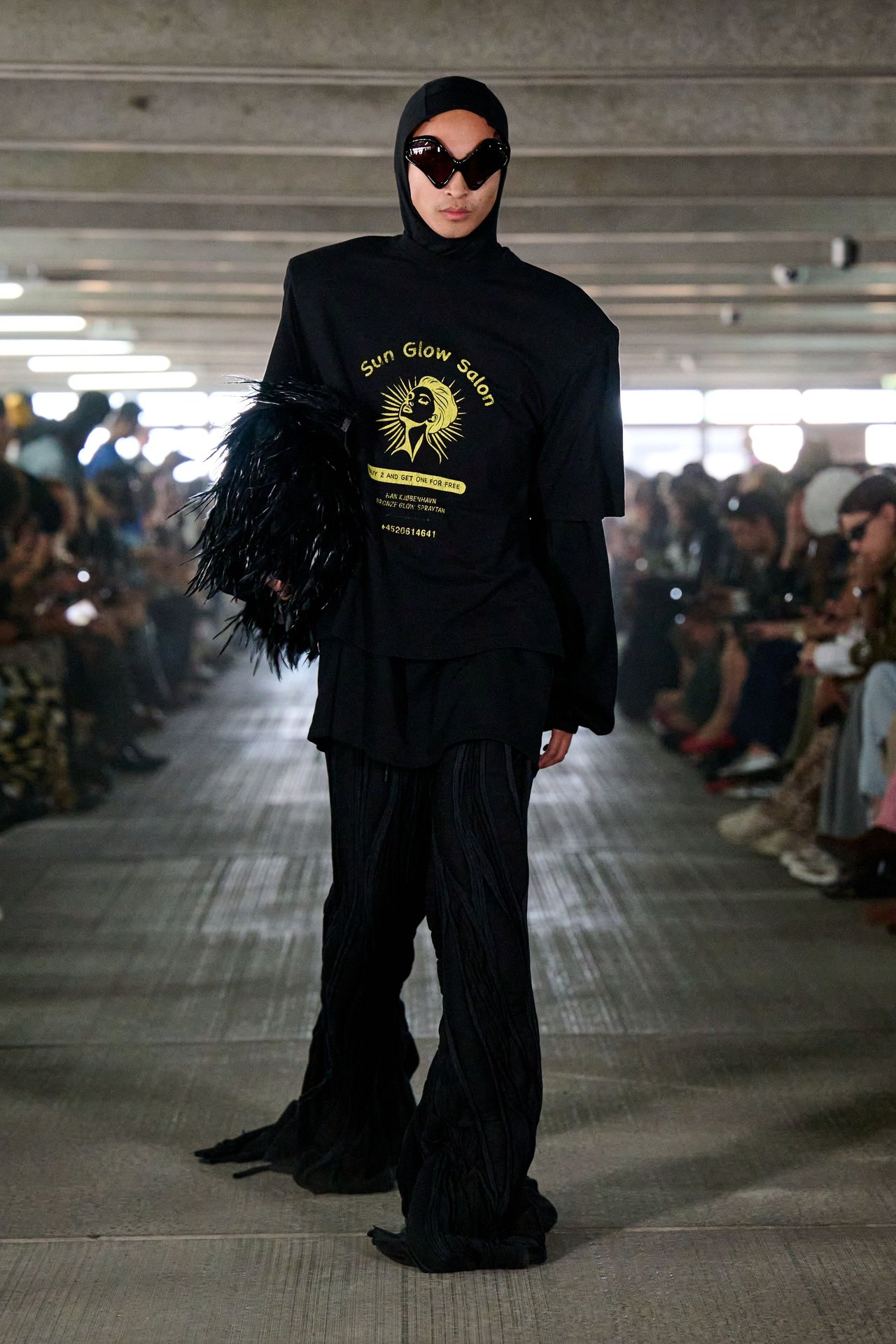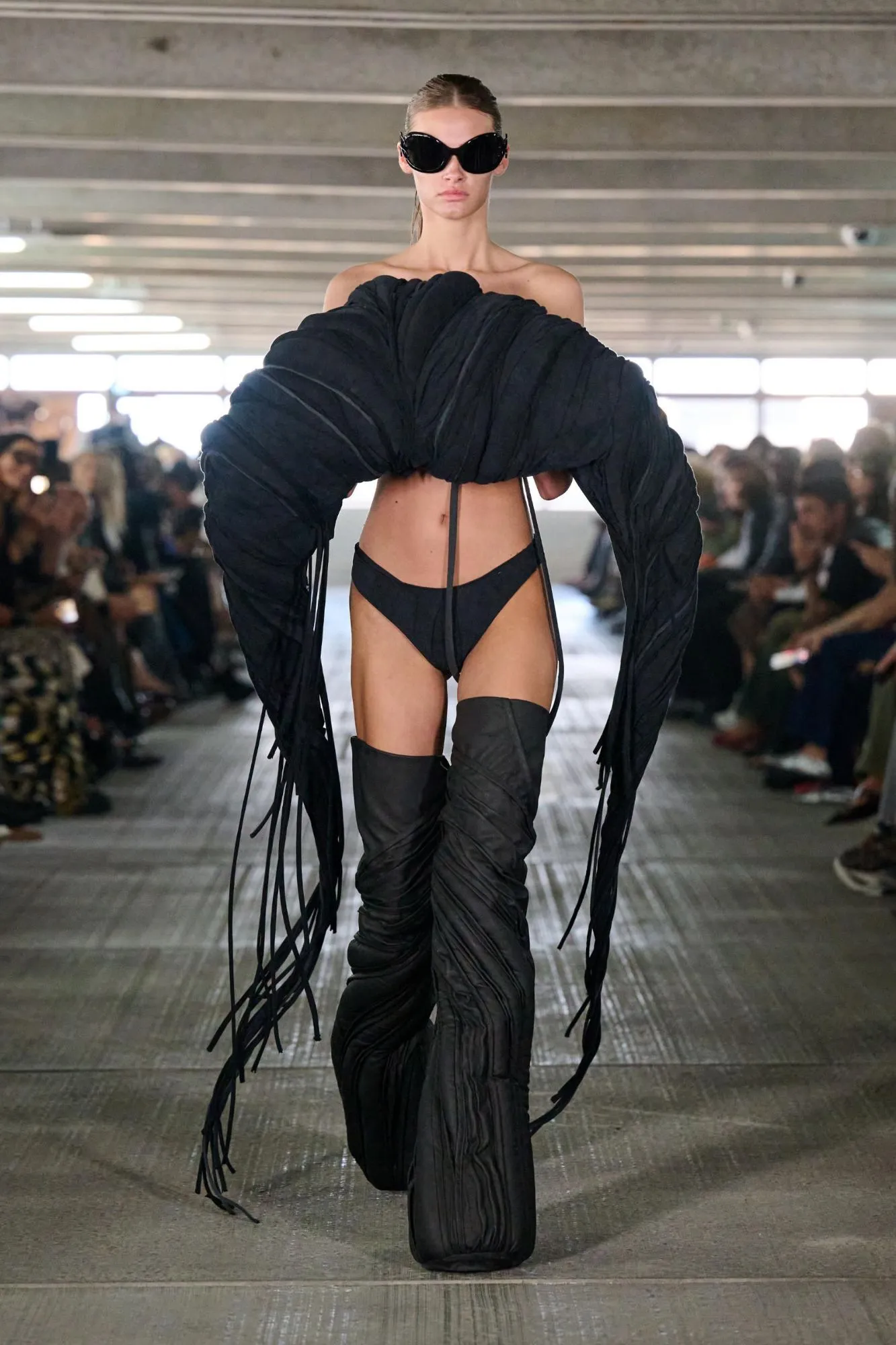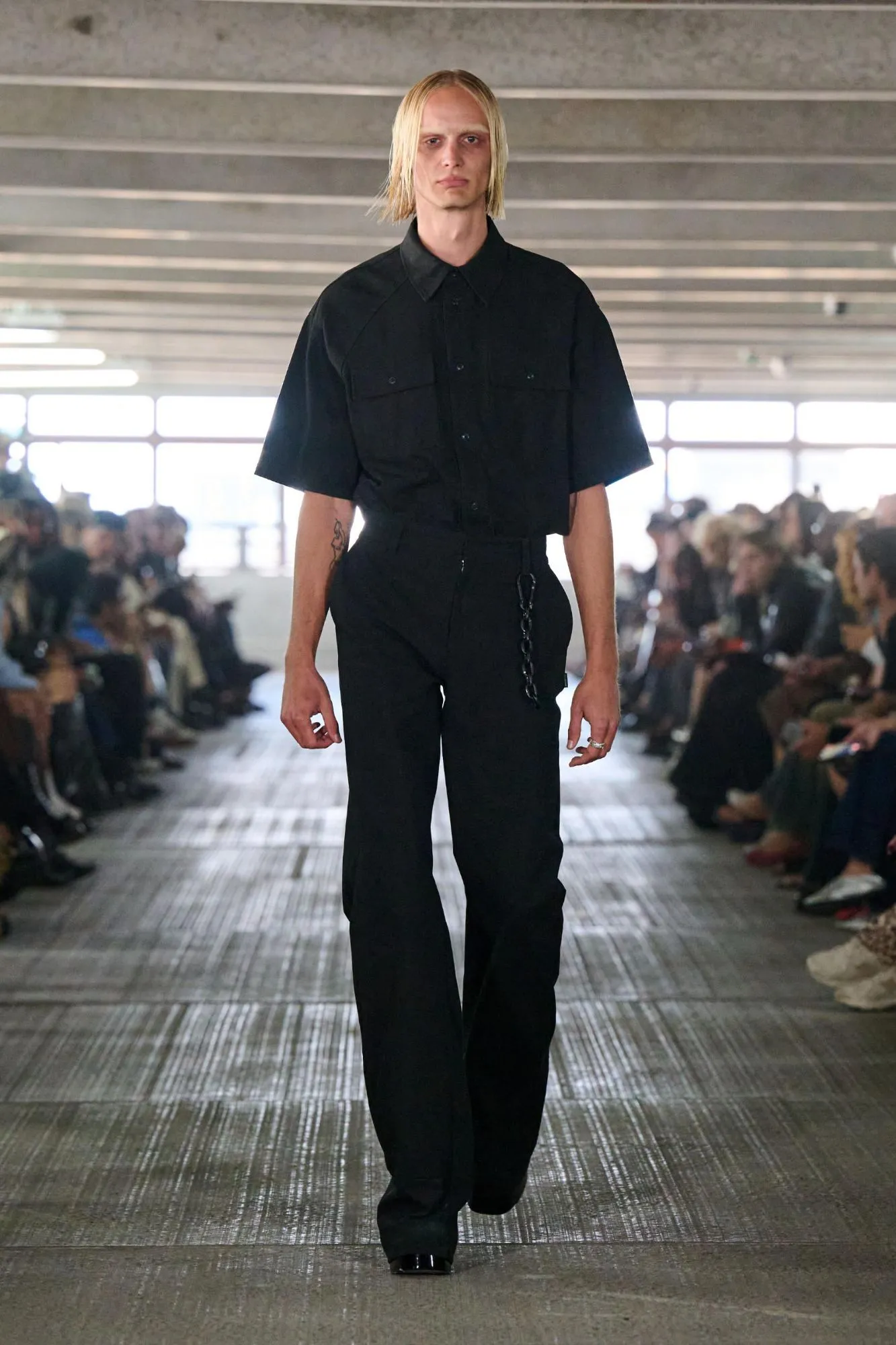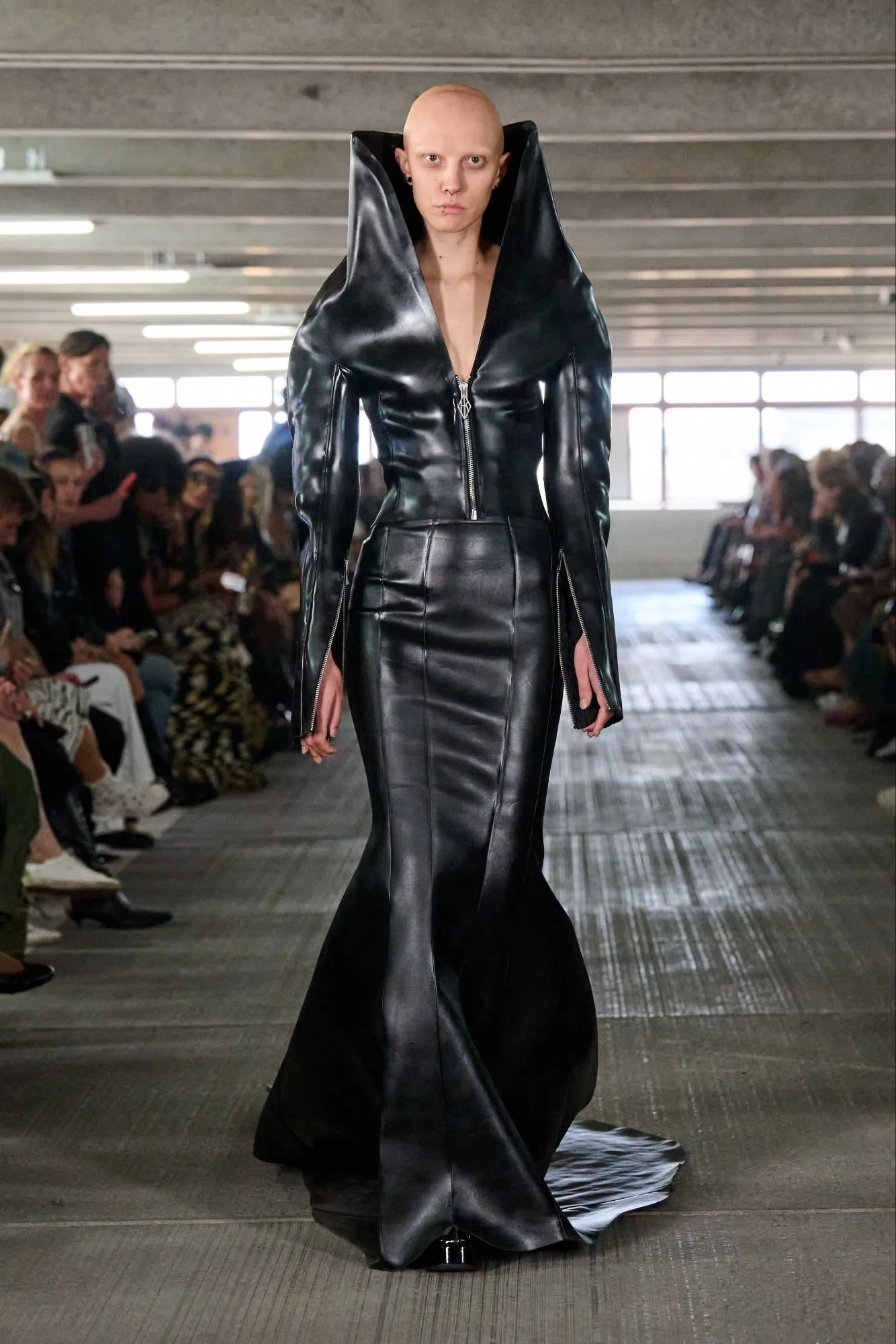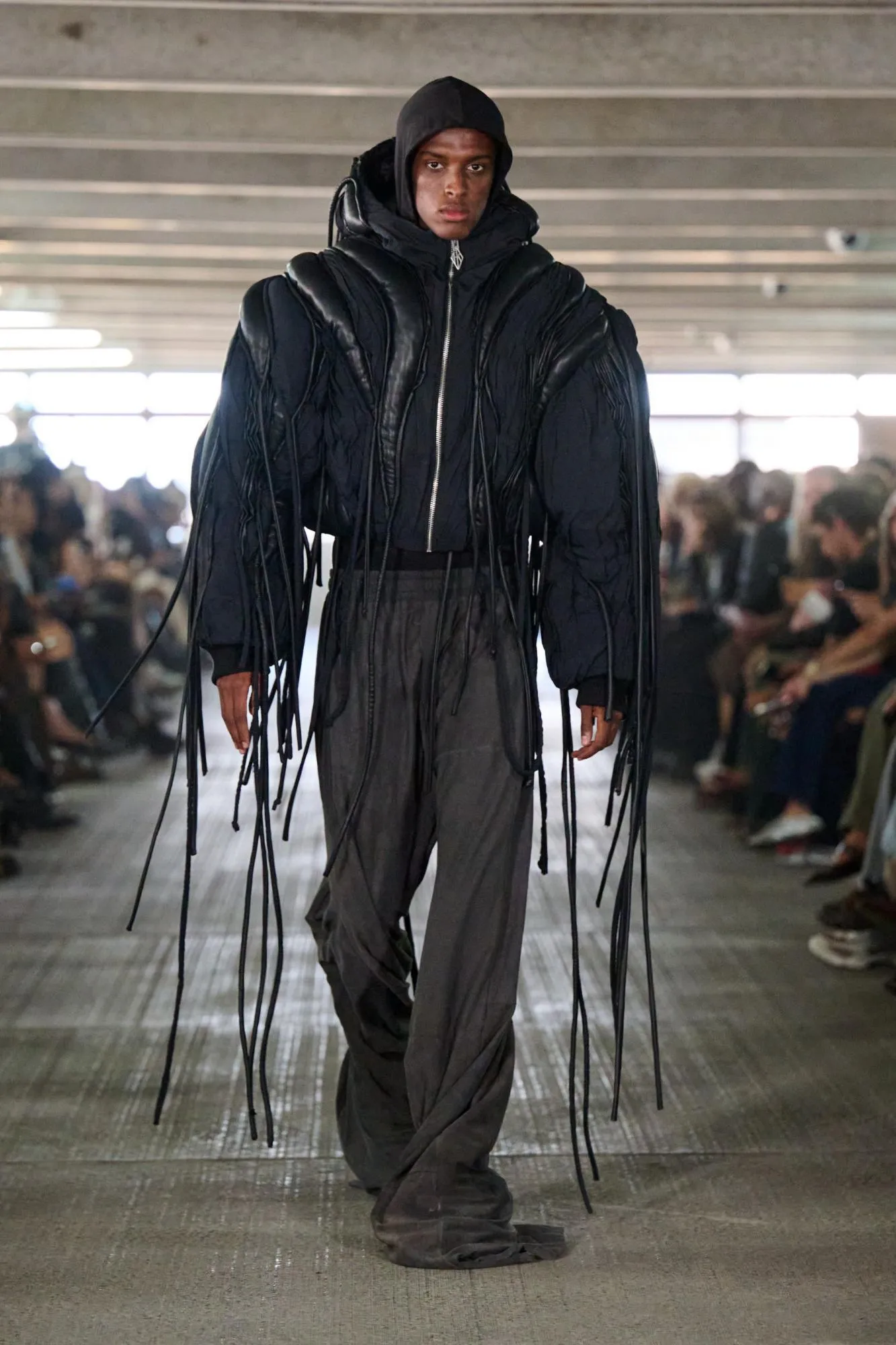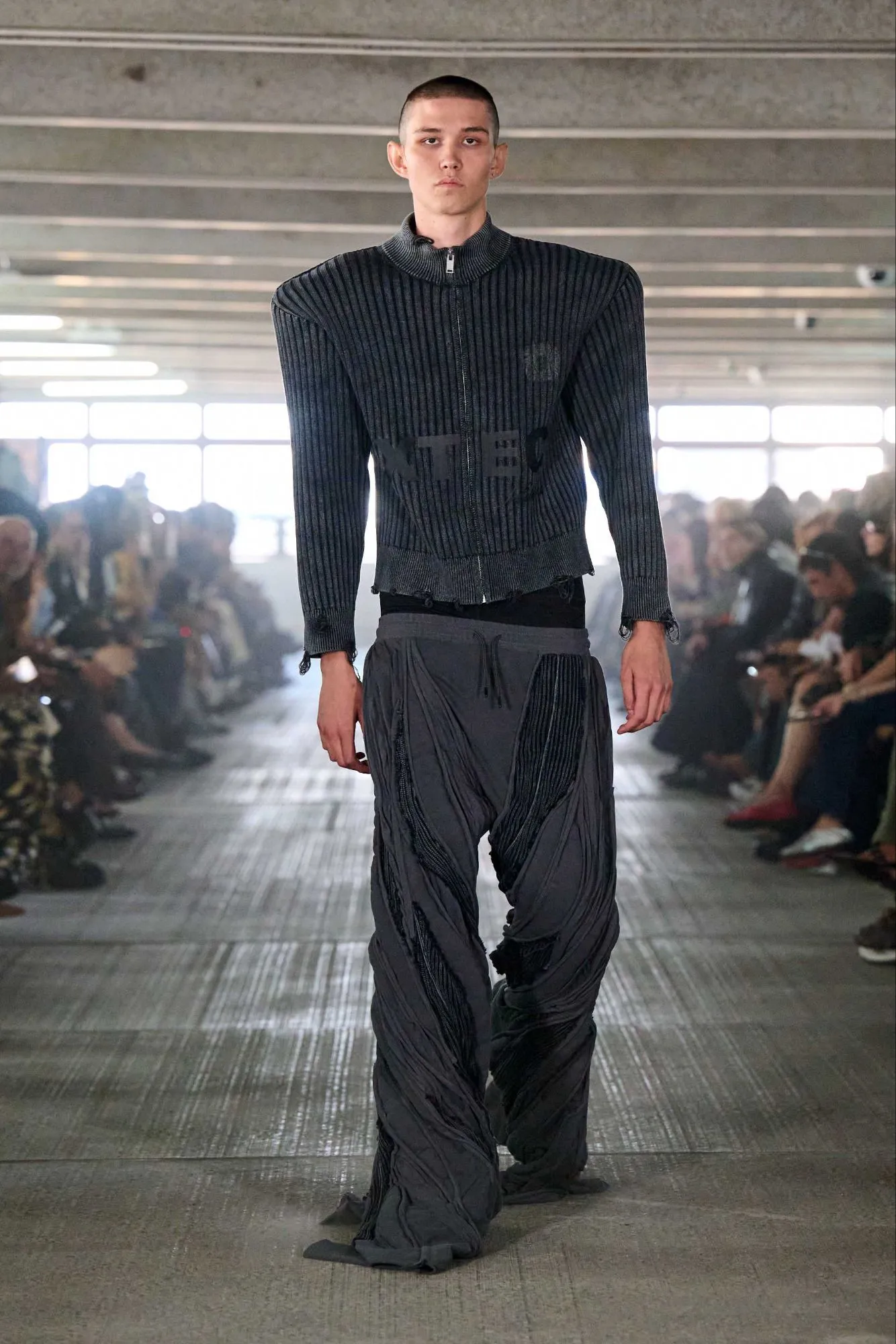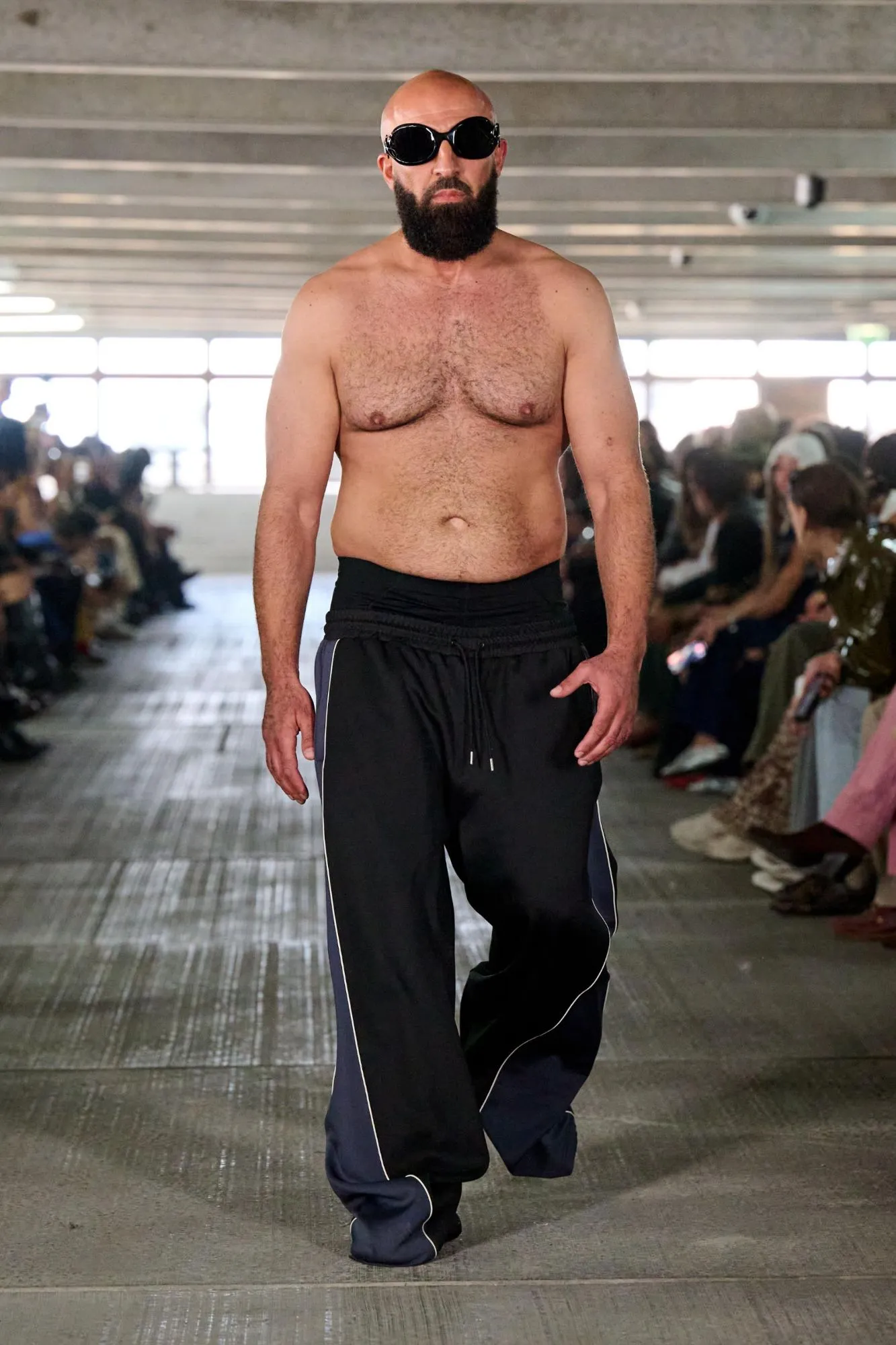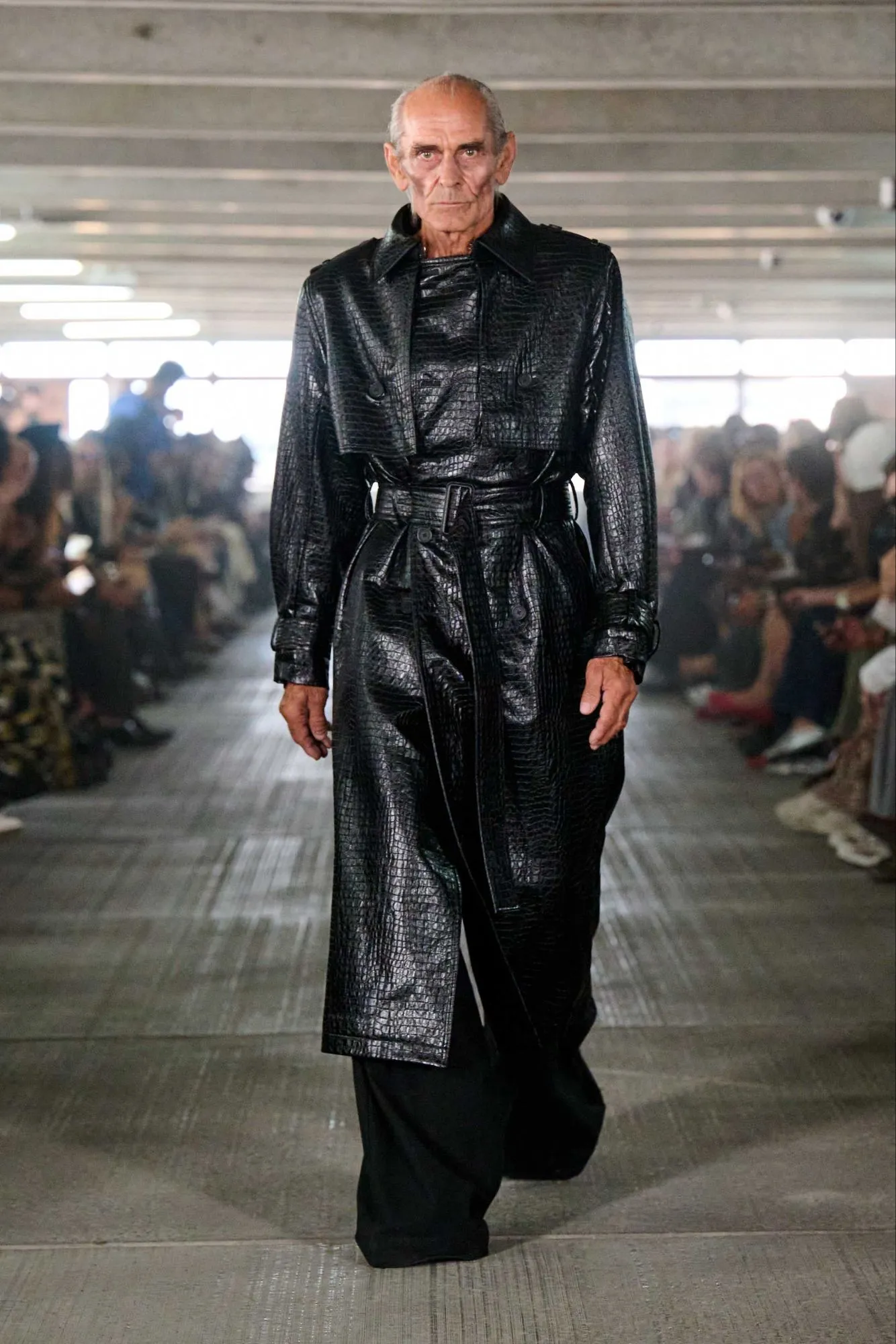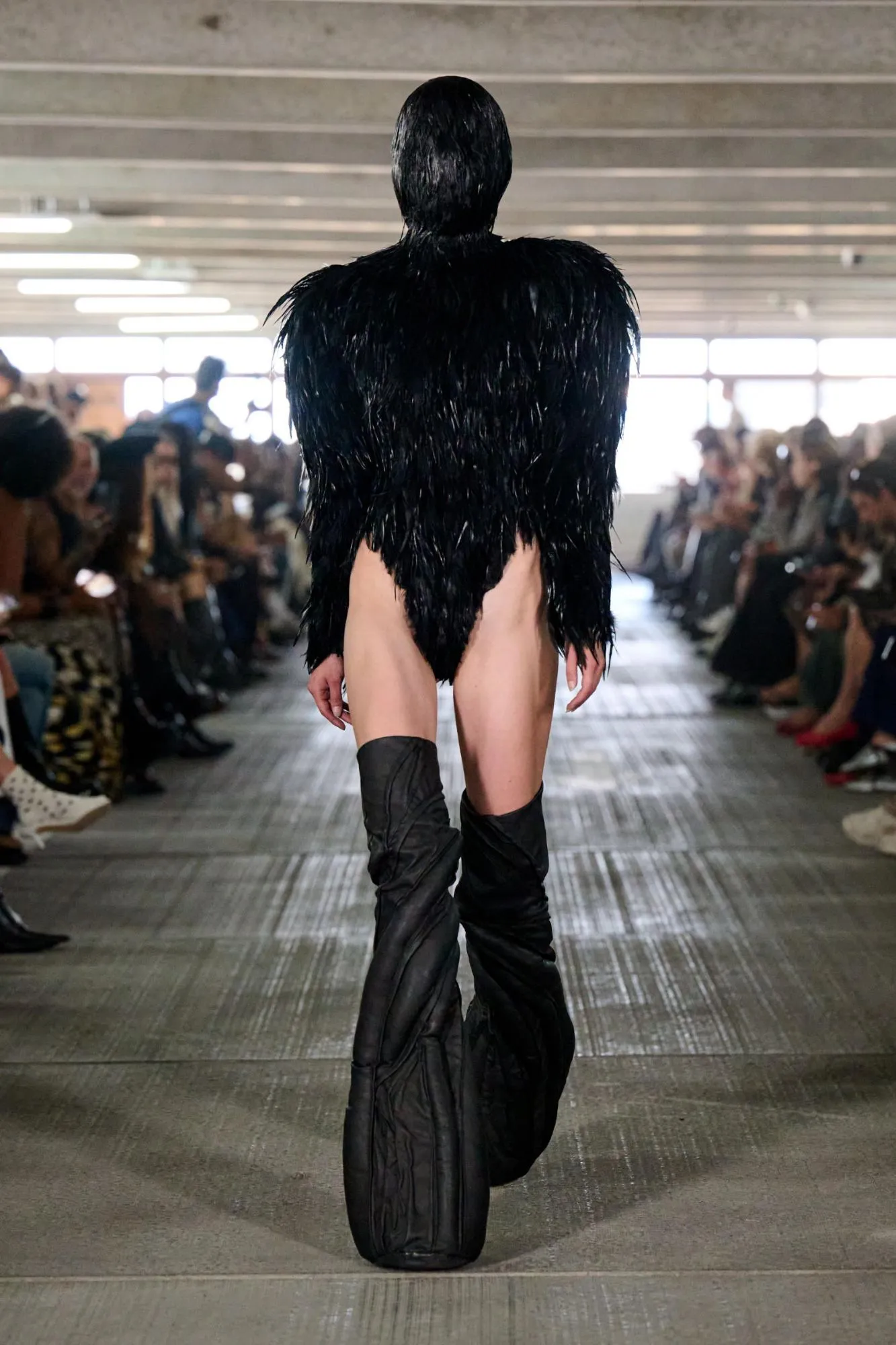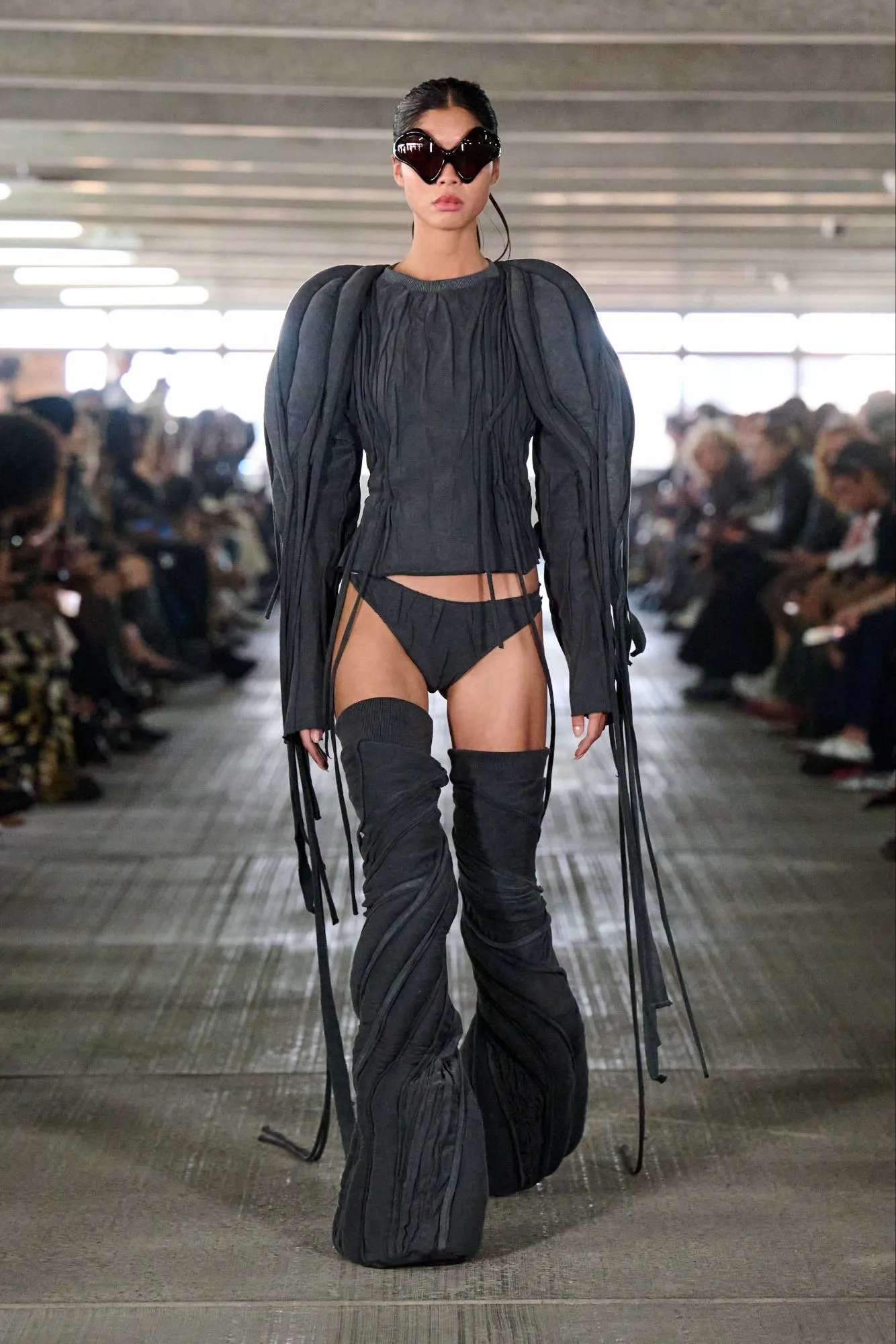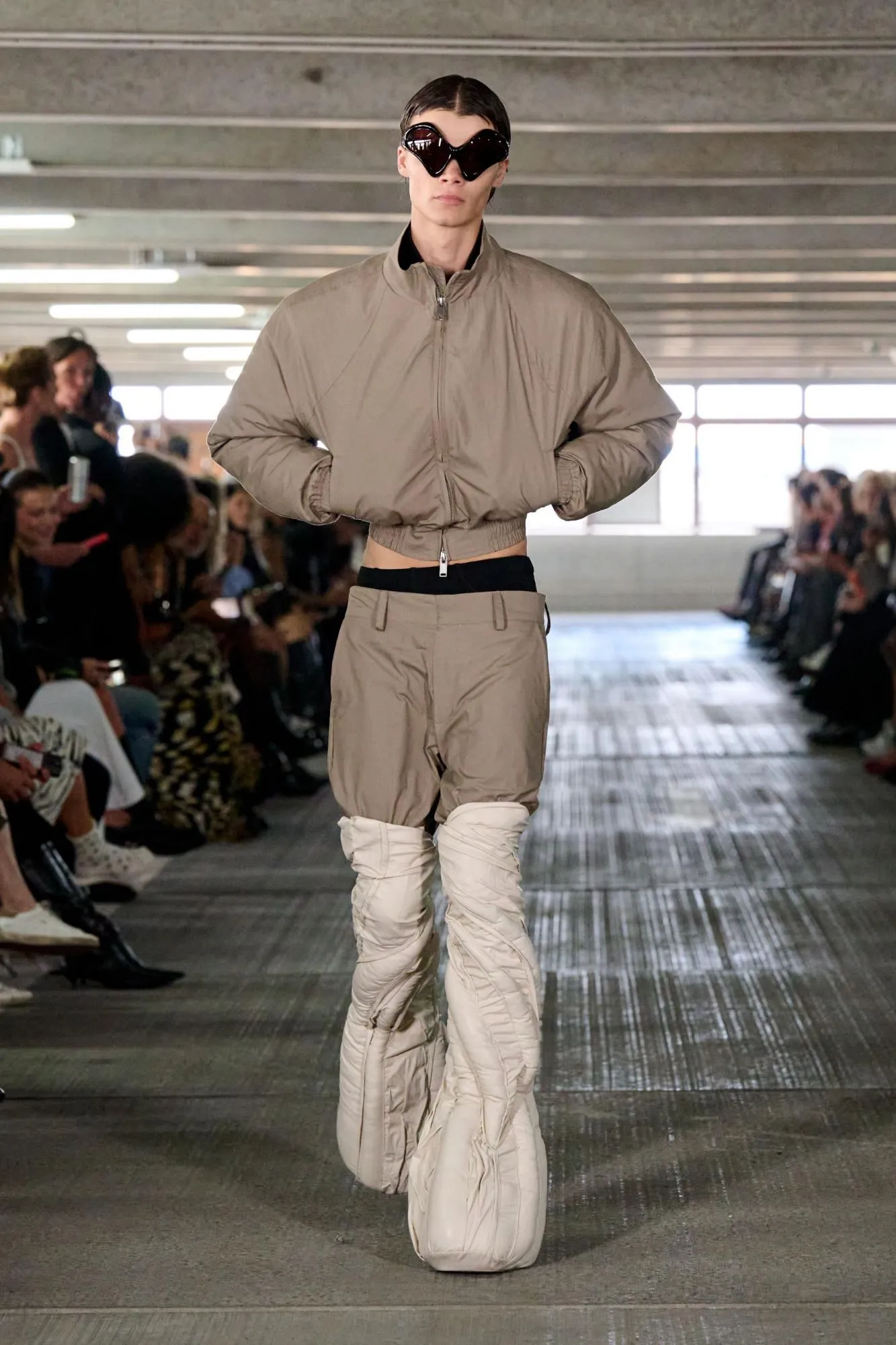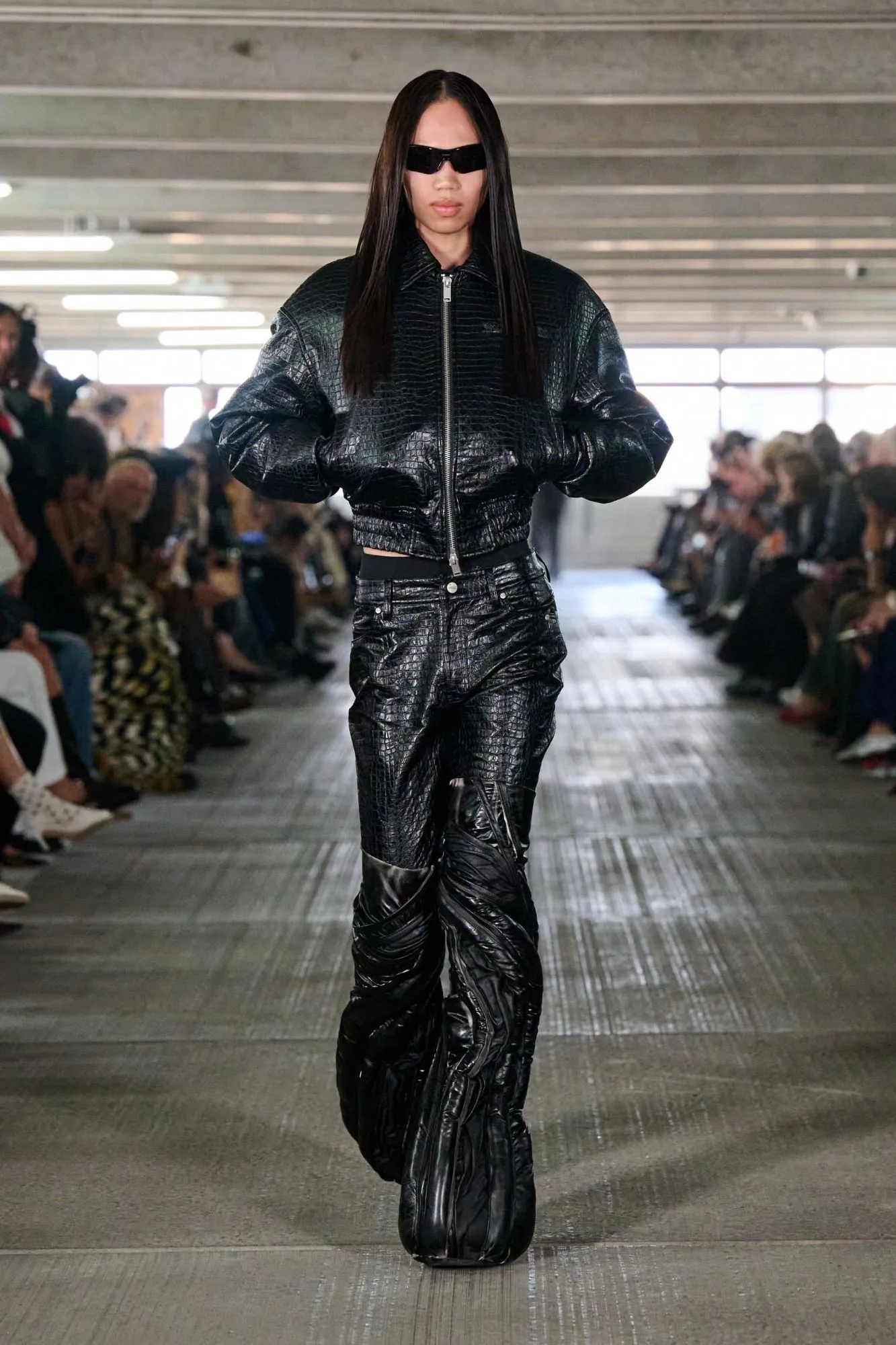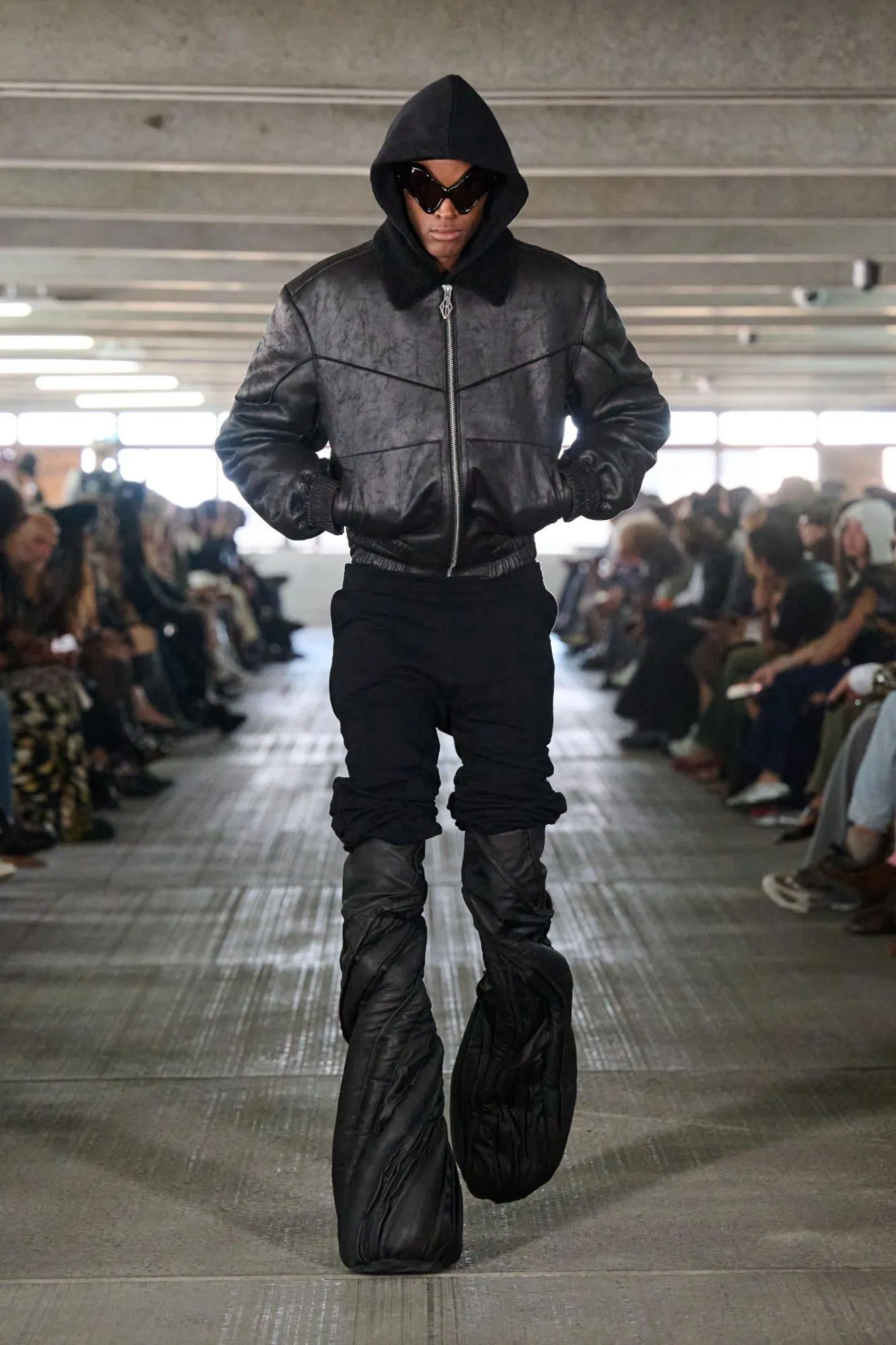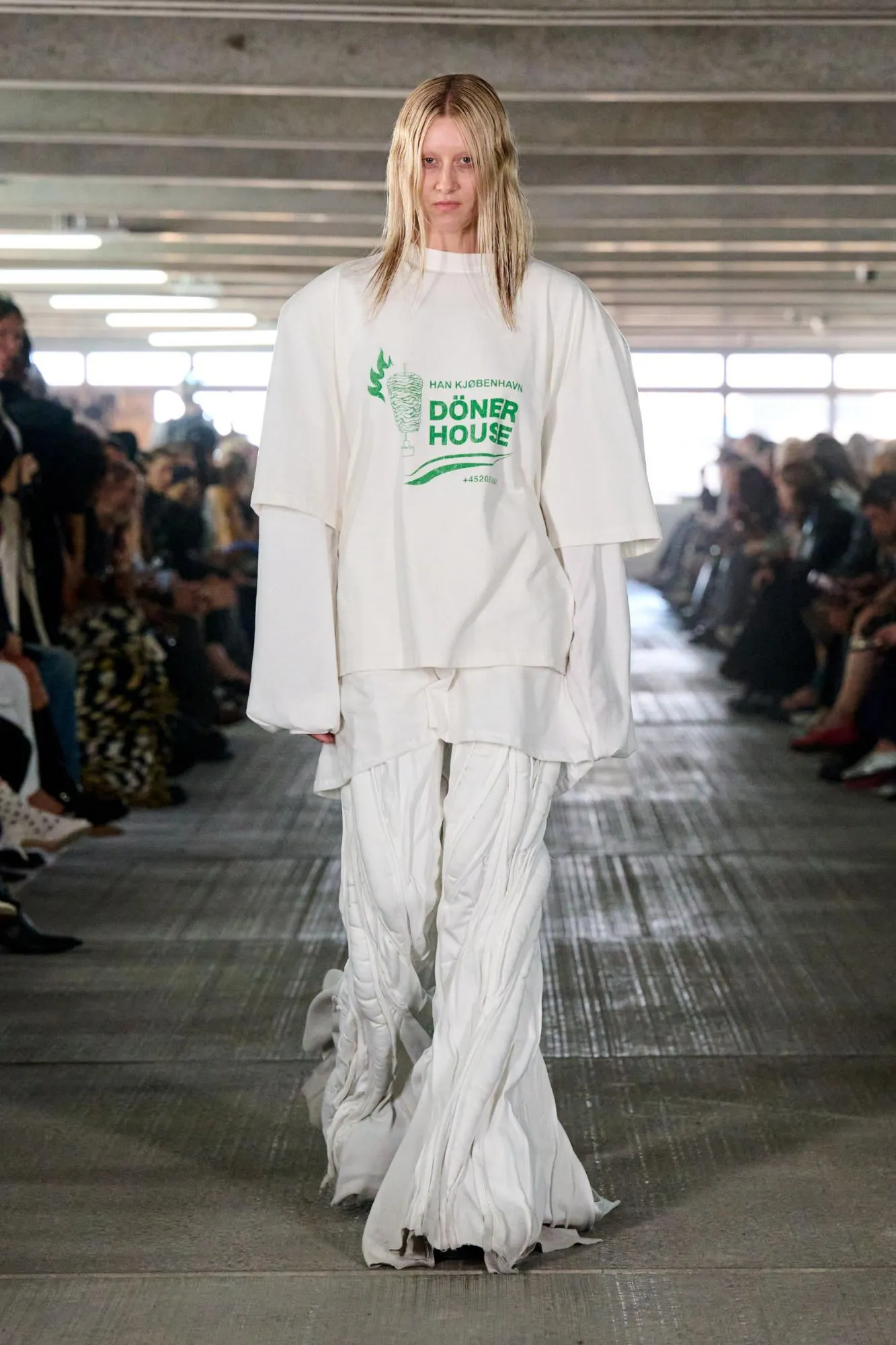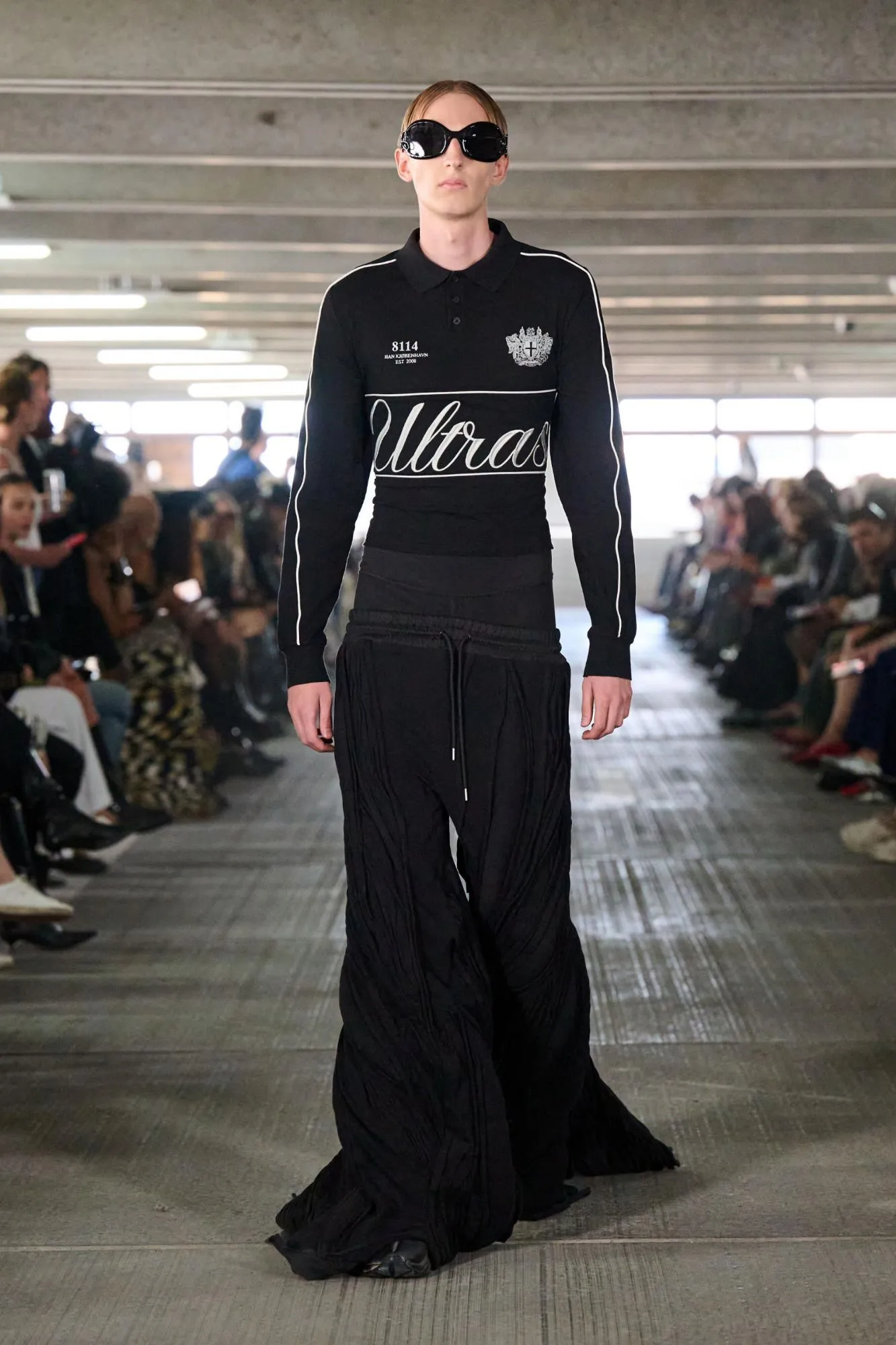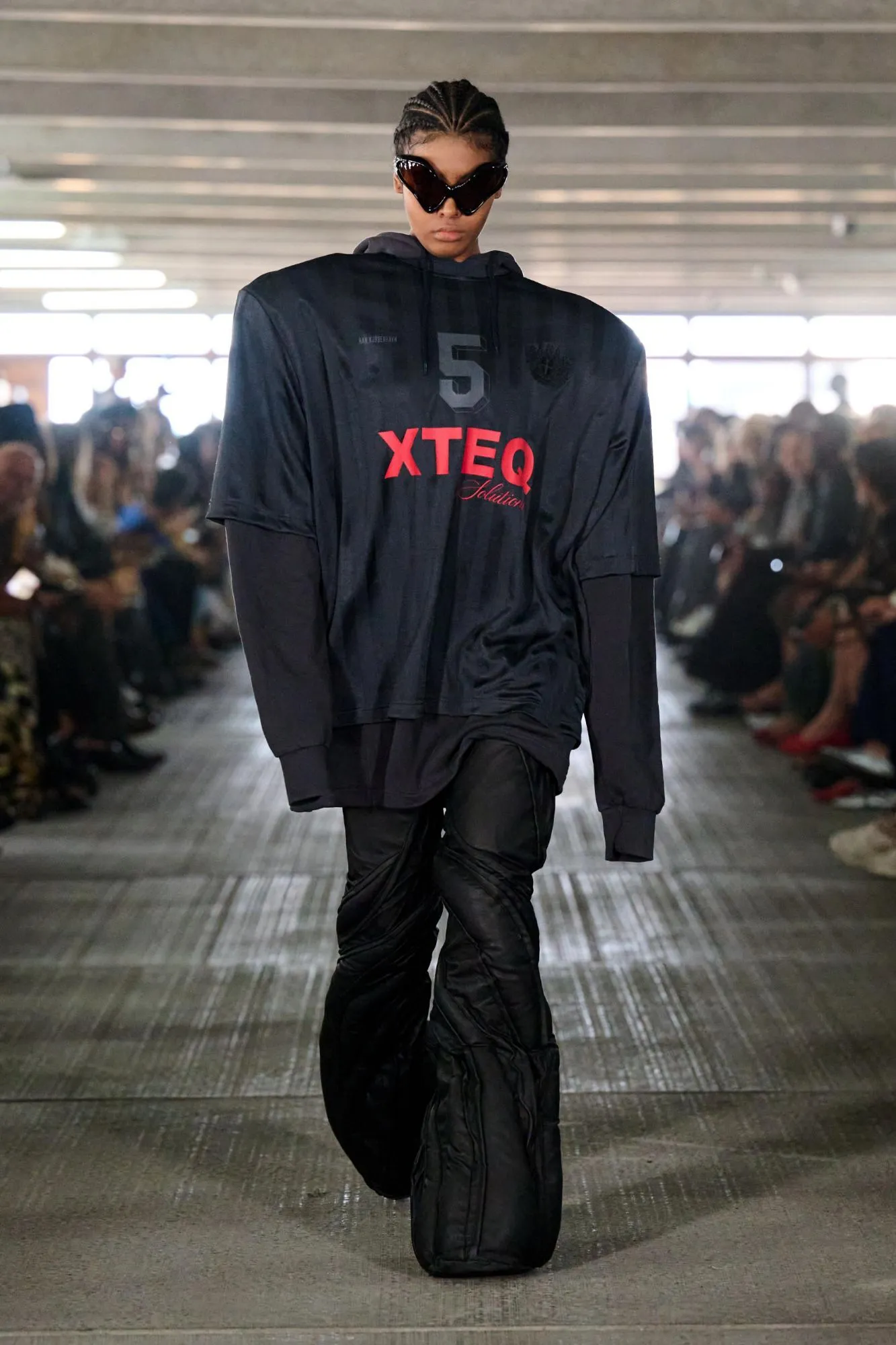The lineup looked like the 4AM queue outside Berghain's neighboring kebab shop: armored-up, weirdly sexy, and slightly scary. Han Kjøbenhavn's Spring/Summer 2026 collection transforms the mundane theater of suburban Copenhagen into high fashion dystopia. Creative Director Jannik Wikkelsø Davidsen doesn't mine his past for inspiration—he weaponizes it.
In a concrete car park bunker, models move like extravagant introverts hiding in massive silhouettes. These suburban gladiators are padded, protected, obscured. Big boots, bigger shoulders, hoods up, heads down. They're dressed for ceremonial standoff, but the game never starts. The whistle never blows.
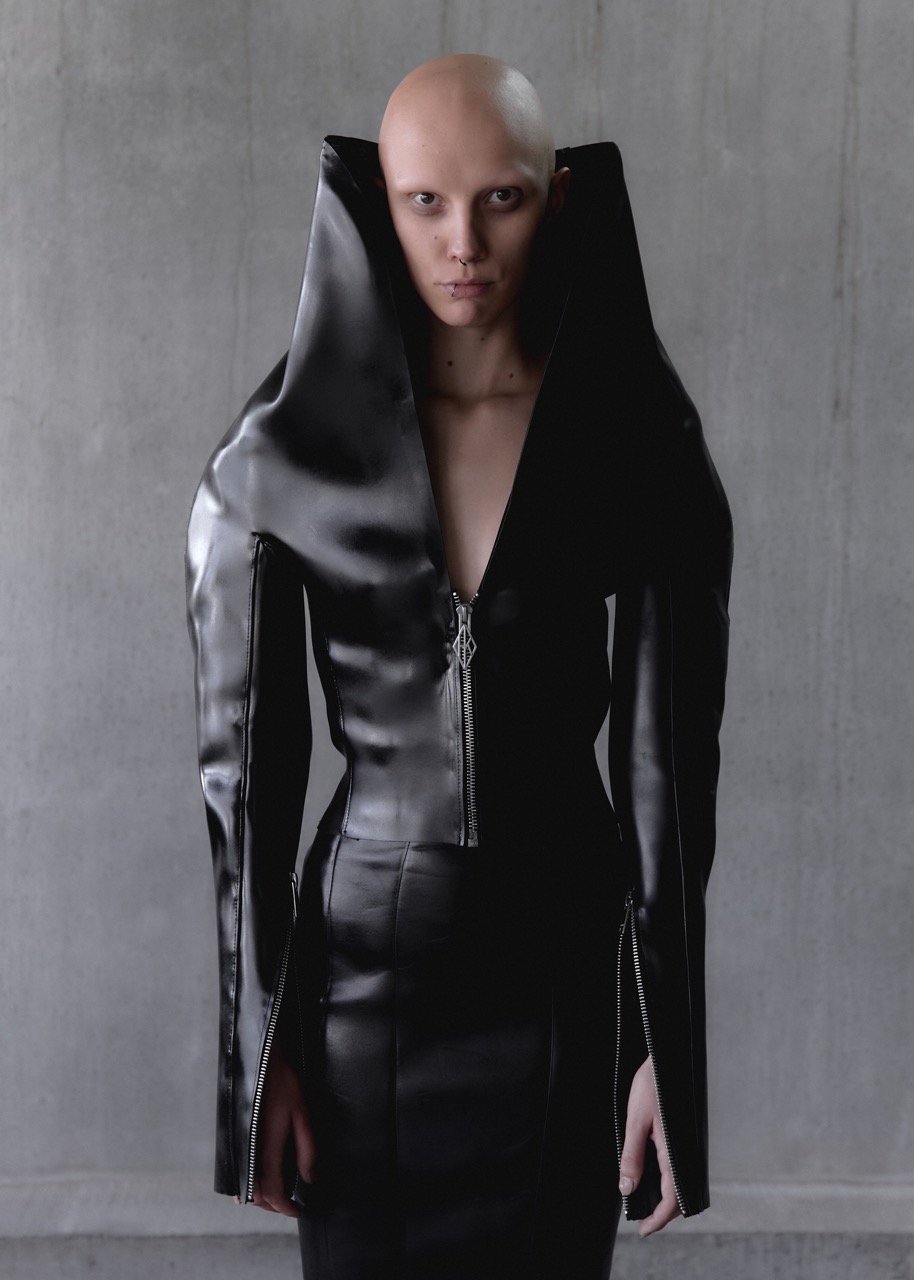
Davidsen's vision is brutally honest about masculine performance anxiety. His garments—faux leather bombers padded like armor, mesh tracksuits that cling with athletic ceremony, synthetic feathers tracing collarbones—aren't pretty. They're necessary. The styling threads between street and ceremony, where bodybuilder bravado crashes into fragility.
The standout look feels like a raven, face and torso covered in synthetic feathers. A matte black football jersey pairs with sculptural gloves. "Doner House" branding appears on oversized tees alongside baroque padding that twirls up legs like ornate vines. This isn't fashion as fantasy—it's fashion as survival gear for the everyday apocalypse of growing up male.

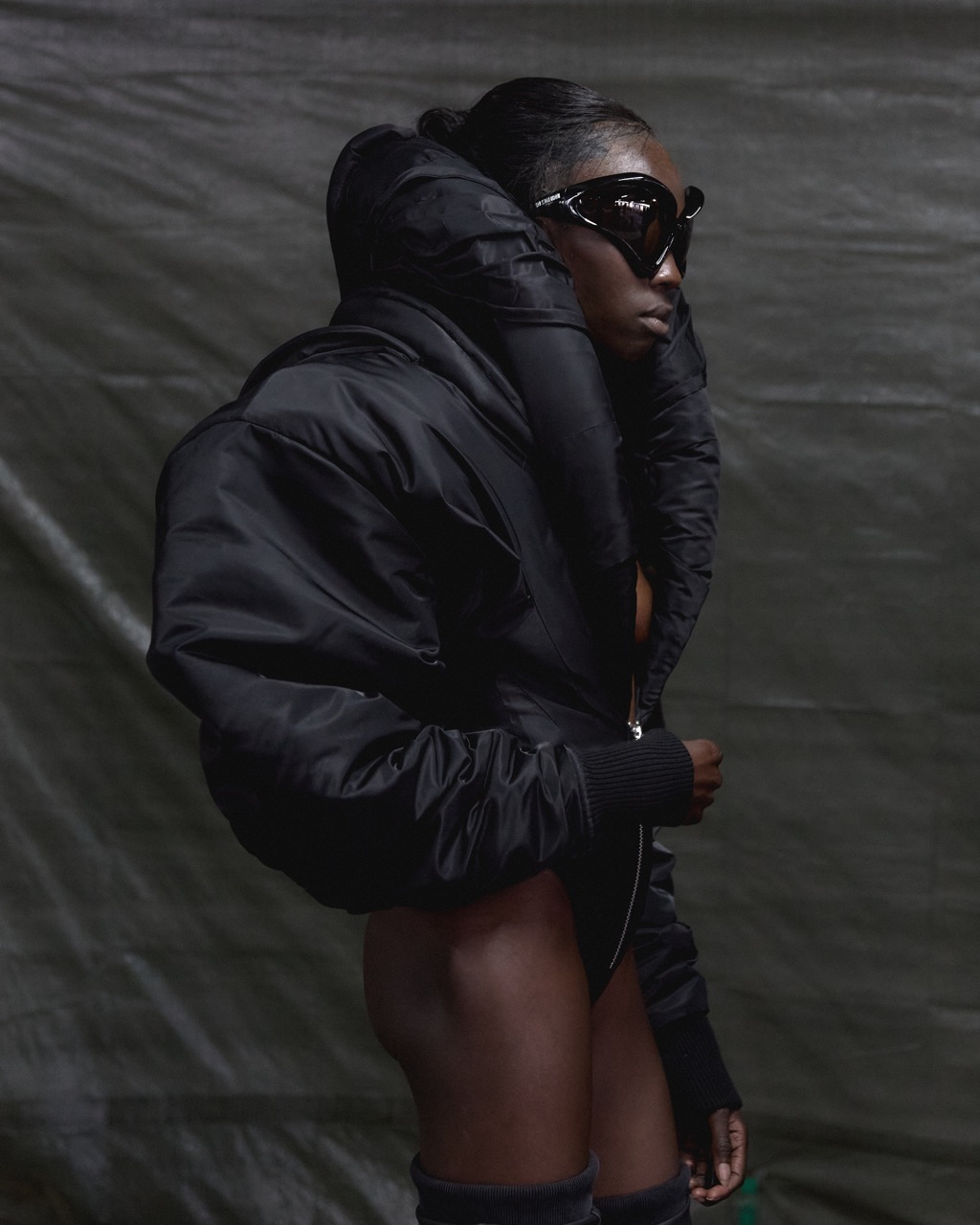

"I don't suddenly find inspiration from a random moment," Davidsen explains. "Each collection is just a new chapter in the same universe." That universe is the forgotten landscape of suburban masculinity—gym deodorant, CRT football flickers, midnight döner queues. But here it's amplified, exaggerated, made strange.
The collection works because it doesn't aestheticize suburban experience. Instead, it reveals the armor already there—the way young men learn to hide, to protect, to perform strength while feeling anything but. The synthetic feathers aren't beautiful because they're real; they're beautiful because they're obviously fake, like the bravado they adorn.
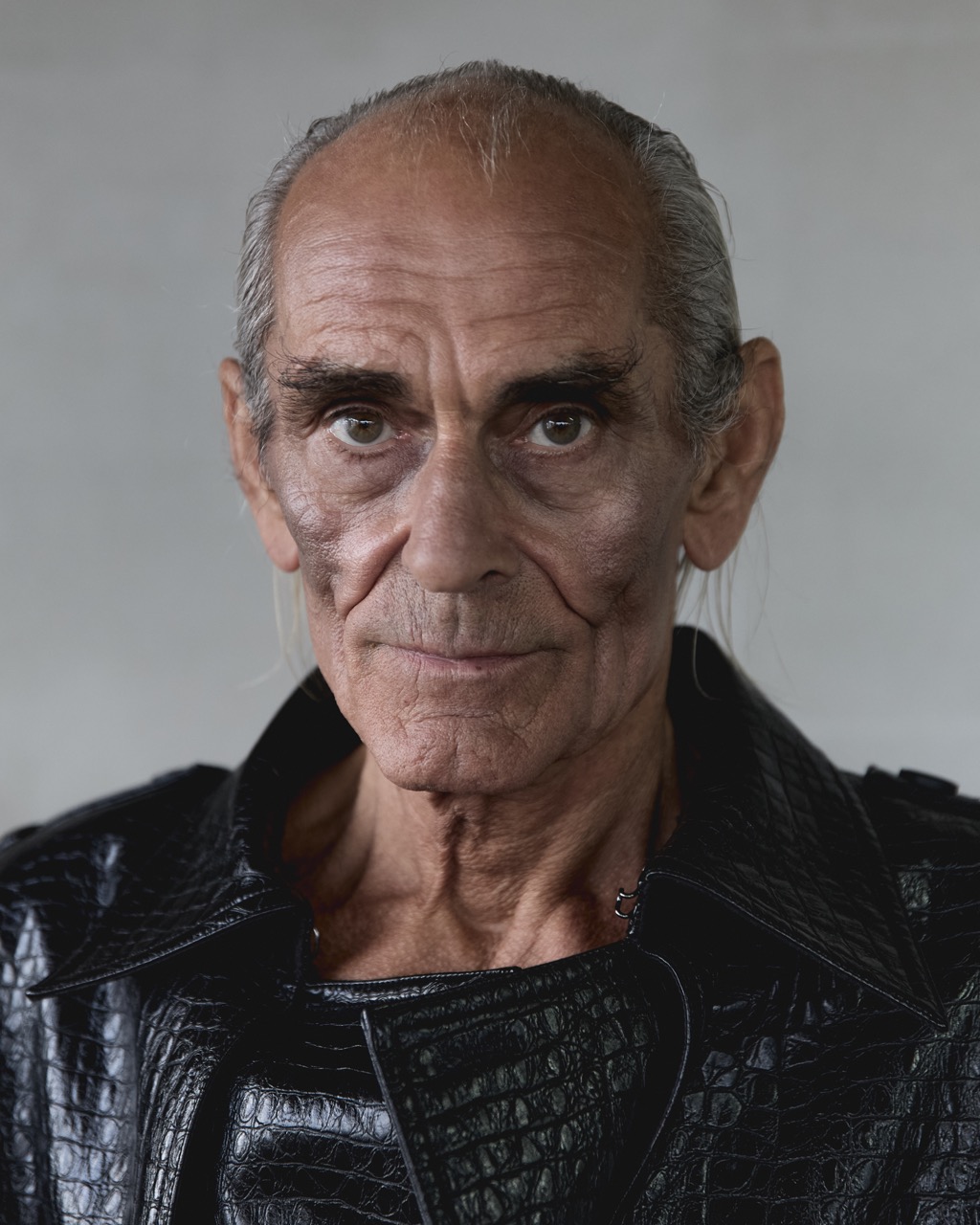
In fashion week's landscape of pretty Scandi minimalism, Han Kjøbenhavn's ravey darkness feels like necessary disruption. This isn't about clothes you'll wear; it's about clothes that wear you, that transform the wearer into something both more and less human. The models don't sell a lifestyle—they embody a condition.
Another Day refuses the easy narrative of escape or transformation. This is fashion as persistence, as showing up repeatedly to the suburban theater and finding new ways to survive the performance. It's about the quiet drama of daily life made loud, made visible, made into something approaching art.

